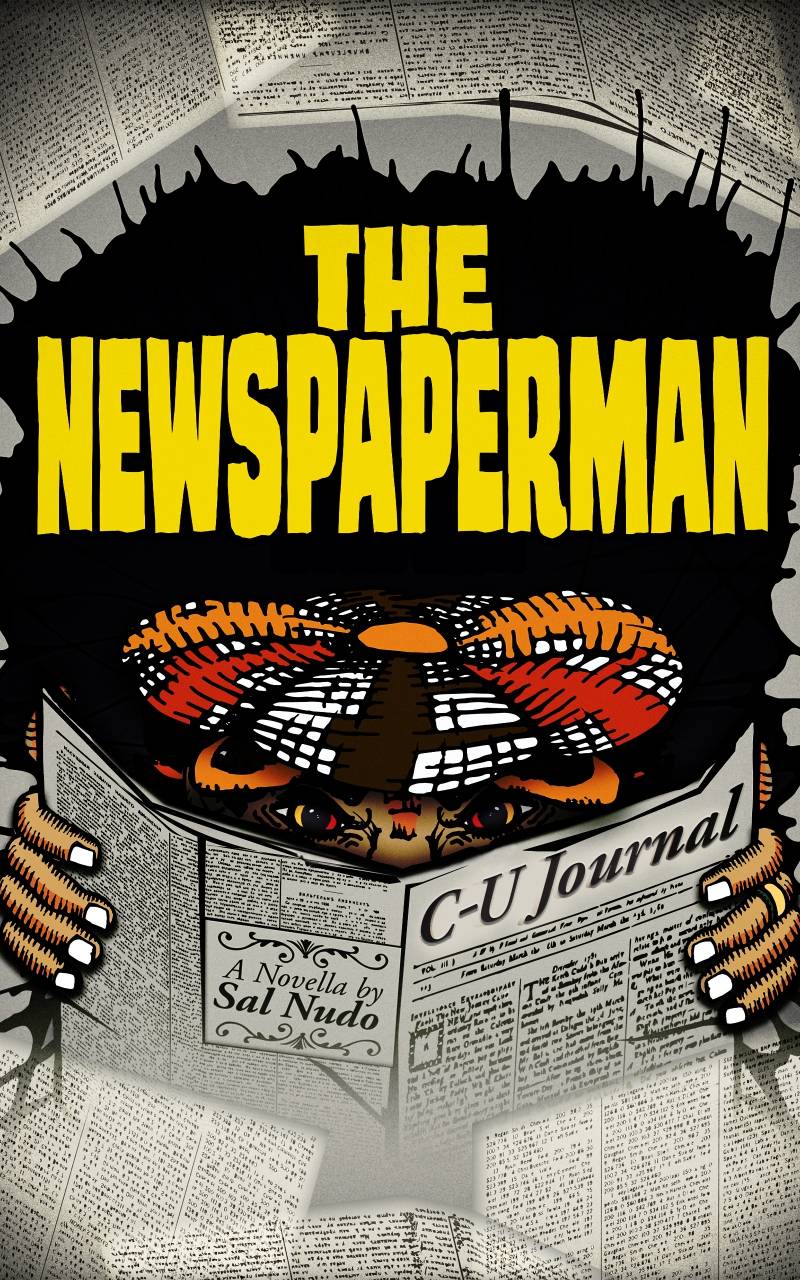“The first time I ever saw Newspaperman, he was handing out papers on the corner of Walnut and Neil on a late-September day. In his 1930’s-style woolen newsboy cap, he came off as a talented thespian in the middle of some hidden-camera place, even shouting ‘extra, extra read all about it!’ to everyone who passed by.”
 When Sal Nudo moved to Champaign, journalists were wearing bell bottoms, smoking in the office, and using type writers to draft their critiques of the Vietnam War. The good news is the outfits got better. The technology improved. But journalism, as an institution, got…worse?
When Sal Nudo moved to Champaign, journalists were wearing bell bottoms, smoking in the office, and using type writers to draft their critiques of the Vietnam War. The good news is the outfits got better. The technology improved. But journalism, as an institution, got…worse?
Nudo’s newest novella, The Newspaperman, has three distinct storylines running through its pages: one fiction, two nonfiction, one written, two found in between the lines. The novella is presented as the story of Seth Kesler, a graphic designer and wannabe reporter, whose life changes when he meets a man known only as the “Newspaperman.” The Newspaperman, to Seth, is the last remaining connection to days of journalists past. But like every good villain, the Newspaperman isn’t quite what he seems. Soon, Seth is pulled deeper into his world, a world made up of lies, rumors, and slander printed as black and white facts in the town newspaper run by a reclusive billionaire. The book is short, but for good reason. It is quick and punchy, and the narrative benefits from making the reader feel out of breath. It ends with a bang loud enough that it’ll make you want to read a nice fluff story about kittens as a palate cleanser.
Between Seth’s story is an unspoken love letter to the C-U community, where the book is set. While Nudo insists he didn’t intend for the book to be an homage to the cities, it’s hard to read the book without seeing it. We make for a wonderful setting to the story, as the narrative deals with tradition clashing with innovation. Scenes take place on brick streets, in the shadows of high-rises, and it feels completely natural. It feels like home.

Though the book is set within CU, Nudo doesn’t want readers to think he is taking potshots at our small-town journalists with his commentary.
“I wasn’t trying to disparage the local journalism that comes from The News-Gazette or Smile Politely,” he says. “The plot of the book has nothing to do with local publications, though I suspect Champaign-Urbana readers will recognize the big brown downtown building that’s mentioned prominently in the story.”
Throughout the novella, Seth is constantly bemoaning what the profession has become; more specifically, what it has become in small towns like ours. “Fake news” is the phrase implied, but never spoken, by Seth or any other character in The Newspaperman. Nudo, like every other journalist in the last year, has been forced to become an expert in fake news. He believes that the solution to the crisis is simple—just read.
“The more familiar you are with what topnotch journalism is, whether you get your news online or through newspapers, the less likely you’ll be sucked in to the shoddy or fake news that’s out there,” he said.
“My dad once told me, as I was hunched over a USA Today way back in 1996, that I was the ‘last of a dying breed,’ someone who still read newspapers…for ‘dying breed’ folks like me, Newspaperman outside my office felt like a savior.”
Each chapter of the book, Seth grows more and more frustrated by what passes for news in the town. To which every other character shrugs him off. “That’s journalism,” they seem to say. It’s a familiar attitude journalists are used to seeing from their readers, no matter how much they try to argue otherwise.
While the book ends on a less-than happy note, Nudo isn’t as pessimistic. He believes the future of journalism is safe, as long as people actually tune in.
“Great journalism is still happening,” he says. “I think it’s too bad more people don’t pick up newspapers to see it.”
_________________________________________________________________________
The Newspaperman is available for free on Kindle-supported devices, and audiobook. Click here for more information.
Photos provided by Sal Nudo. Book cover illustration by Theodore S. Veatch. Portrait photo by Samuel Logan.








